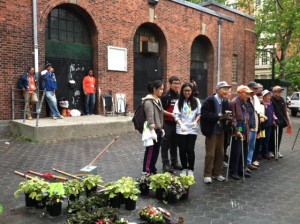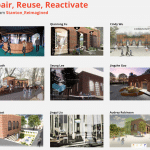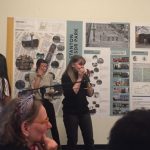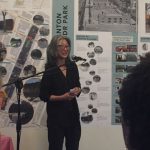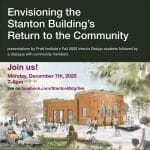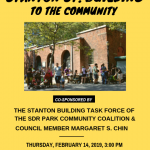Center for Urban Culture‘s introduction to Stretching New York City’s Capital Dollars
Key Findings
- Reforms to New York’s capital process could save the city at least $800 million over five years, according to our analysis of estimated cost overruns tied to major problem areas plaguing the capital project design and construction process for public buildings.
- That $800 million in savings could be used to pay for 150 full-time parks maintenance workers for the next decade..
- The report’s analysis of reforms enacted by DDC beginning in January 2019 finds notable improvements in front-end planning, project management, payment, avoiding change orders, and pre-qualifying contractors. As a result, the average project duration decreased from 96 months to 90 months as of June 2020—a promising achievement in a year and a half.
- 5 ongoing challenges continue (below)
- …the state- requirement to award contracts to the lowest bidder can delay the average project by at least 6 to 9 months and adds at least 20% or $1 million to the original bill due to poor performance and delays..the low-bid requirement annually costs the city at least $100 million.
- Delays created by the change order process, on average, can add at least $600,000 to each project annually—on top of the cost of additional work…we estimate that change-order-related delays cost the city more than $60 million each year.
- While some improvements to project delivery have been made, capital project staff at sponsor agencies say that too few DDC project managers are acting as the client’s best advocate and could do more to anticipate roadblocks, navigate approvals, and speed up the process…sponsor agencies can help improve project delivery by limiting scope changes after a project is initiated.
- Multiple capital eligibility reviews by the Office of Management and Budget—conducted for every budget modification..add between four and six months to the average project timeline… requirements for registering contracts with the Comptroller’s Office has delayed projects hundreds of times, as initial applications are denied and returned with additional questions.
- When allowed to self-manage projects via pass-through funding, sponsor agencies..can complete projects in just 20 percent of the time of DDC-managed projects, and at one-third of the cost.
New York can no longer afford to squander its limited capital funds. The city’s infrastructure needs are simply too great and capital funding too limited.
New York can no longer afford to squander its limited capital funds. The city’s infrastructure needs are simply too great and capital funding too limited.
“public parks are straining to accommodate a surge in use amid the pandemic”
…But right now, the city’s broken capital construction process is standing in the way.
…the city’s limited infrastructure funds don’t stretch very far, leaving many needed projects on the drawing board and causing unacceptable trade-offs between maintaining current infrastructure and building innovative new structures to meet growing demand.
Reforms Are Taking Hold, But Need to Go Much Further
…the city’s capital project management agency, the Department of Design and Construction, announced a major overhaul of its processes. The agency’s Strategic Blueprint for Construction Excellence mapped out plans to expand front-end planning to reduce delays before construction even starts; modernize the procurement process; implement more effective project management within DDC; and improve coordination among sponsor agencies, oversight agencies, and vendors across hundreds of different projects.
The Center for Urban Future report provides the first assessment of DDC’s reform efforts.
…reforms are taking hold, resulting in more thorough front-end planning, more responsive project managers, better avoidance of lengthy change order delays, faster payments, and better-qualified contractors.
But..”A capital process where the average project still takes 90 months remains badly broken.”
Five Keys to Fixing NYC’s Broken Capital System
…analyzed in more detail on page 11 of the report.
1. DDC is not yet getting the help it needs from OMB and other city agencies that play a significant role in the delays that plague the capital process.
2. The low-bid requirement produces an underwhelming pool of contractors, leading to subpar performance and routine delays.
3. The approval process for change orders still takes too long.
4. Projects still suffer from inadequate project management.
5. Libraries and cultural institutions lack the authority or capacity to self-manage more projects
A Glimmer of What’s Possible: DDC’s Performance During COVID
..DDC leveraged emergency powers granted in response to the pandemic to overcome the usual restrictions and procedural hurdles and execute projects at warp speed. For example, a new outpatient healthcare facility in the Bronx was completed in just six months, while DDC was also building 15 new testing centers and two temporary field hospitals—a pace that would be unthinkable under the current process.
…At this moment of crisis, the city needs to maximize the impact of every dollar invested into vital social infrastructure—and seize the opportunity to transform a dysfunctional capital construction process.
The next mayor and the City Council will need to build on this progress and go a lot further.”
More details here.
Full report here.

